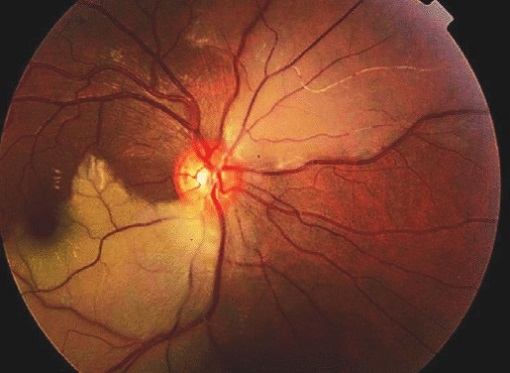Nikhil Prasad Fact checked by:Thailand Medical News Team Jan 07, 2025 11 months, 2 weeks, 1 day, 13 hours, 32 minutes ago
Medical-News: In a groundbreaking study conducted by researchers from the Haseki Training and Research Hospital in Istanbul and Kirikhan State Hospital in Hatay, Turkey, the long-term effects of COVID-19 on retinal and optic disc health were meticulously analyzed. The study, using Optical Coherence Tomography Angiography (OCTA), sheds light on the subtle yet significant impacts of the virus on the eye's microvascular structures.
 COVID-19 Causes Long-Term Retinal Health Issues
COVID-19 Causes Long-Term Retinal Health Issues
The researchers evaluated 40 patients who had recovered from mild to moderate COVID-19 and compared their findings with 40 healthy individuals. Over a year-long follow-up period, the study explored the progression of retinal and optic nerve changes, offering critical insights into how COVID-19 may affect vision health in the long term.
The Study and Its Methods
This
Medical News report provides detailed findings from a prospective cohort study conducted on participants aged 18 to 58. Patients diagnosed with COVID-19 via PCR tests were included, while those with systemic illnesses or severe COVID-19 symptoms requiring intensive care were excluded to minimize confounding factors. The healthy control group, matched by age and gender, comprised volunteers with no history of systemic diseases.
Using OCTA, a non-invasive imaging technique, researchers analyzed vessel density (VD), retinal nerve fiber layer (RNFL) thickness, and the foveal avascular zone (FAZ), among other parameters. Scans were performed at baseline (one month after recovery), four months, and twelve months.
Key Findings
The findings reveal persistent retinal changes among post-COVID-19 patients. Here are the critical observations:
-Vascular Density: The COVID-19 group exhibited significantly lower VD in the nasal parafoveal region of the superficial capillary plexus (SCP) and the superior perifoveal region of the deep capillary plexus (DCP). These changes suggest microvascular compromise, potentially linked to the virus-induced endothelial dysfunction.
-Foveal Avascular Zone: Post-COVID patients showed an enlarged FAZ area and perimeter at all follow-ups. These findings highlight ischemia and compromised retinal microcirculation.
-Central Macular Thickness: A decrease in central macular thickness (CMT) was consistently noted in the COVID-19 group, further supporting the hypothesis of retinal ischemia.
-Retinal Nerve Fiber Layer: RNFL thickness was higher in the early months post-recovery but normalized by the 12-month mark, possibly indicating transient inflammation linked to the viral infection.
-Radial Peripapillary Capillaries: Interestingly, VD in the temporal quadrant remained elevated throughout the study, suggesting compensatory vascular changes.
What These Findings Mean
r />
The retina, with its dense vascular network, is uniquely vulnerable to systemic conditions like COVID-19. The observed changes in VD, FAZ dimensions, and CMT point to a possible cascade of ischemic and inflammatory processes triggered by the virus. This could reflect broader systemic implications, particularly for other microvascular systems.
Moreover, the early increase in RNFL thickness and persistent changes in radial peripapillary capillary density hint at the adaptive mechanisms of the optic nerve in response to the virus's impact.
Conclusions
The findings underscore the need for continued vigilance and follow-up of COVID-19 survivors, particularly those with visual complaints. Even mild to moderate cases of COVID-19 can result in lasting retinal changes, reinforcing the importance of systemic and ophthalmological monitoring.
It is imperative to investigate the underlying mechanisms further. Are these changes reversible? Do they indicate broader systemic vascular compromise? Long-term, multicentric studies are essential to provide clarity.
In conclusion, the study by researchers from the Haseki Training and Research Hospital and Kirikhan State Hospital emphasizes the subtle but lasting effects of COVID-19 on the eye. While the findings offer a window into the microvascular impact of the virus, they also call for heightened awareness among clinicians to ensure timely intervention and care.
The study findings were published in the peer-reviewed journal: Diagnostics.
https://www.mdpi.com/2075-4418/15/1/114
For the latest COVID-19 News, keep on logging to Thailand Medical News.
Read Also:
https://www.thailandmedical.news/news/sars-cov-2-can-infect-the-retinal-pigment-epithelium-and-impair-vision-over-time
https://www.thailandmedical.news/news/therapeutic-benefits-of-taurine-and-histidine-in-retinal-health
https://www.thailandmedical.news/news/new-discovery-on-retinal-gene-points-to-age-related-vision-loss-and-potential-treatments
https://www.thailandmedical.news/news/covid-19-s-hidden-impact-on-eyes-unveiling-rare-retinal-conditions
